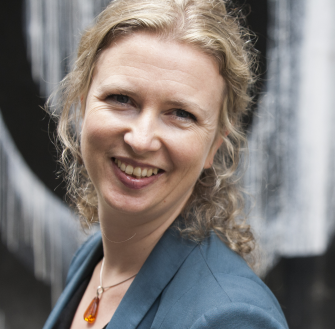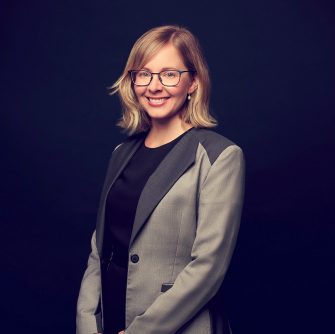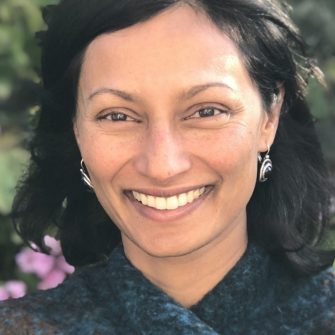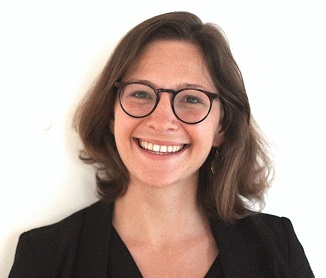Climate change, disasters and displacement
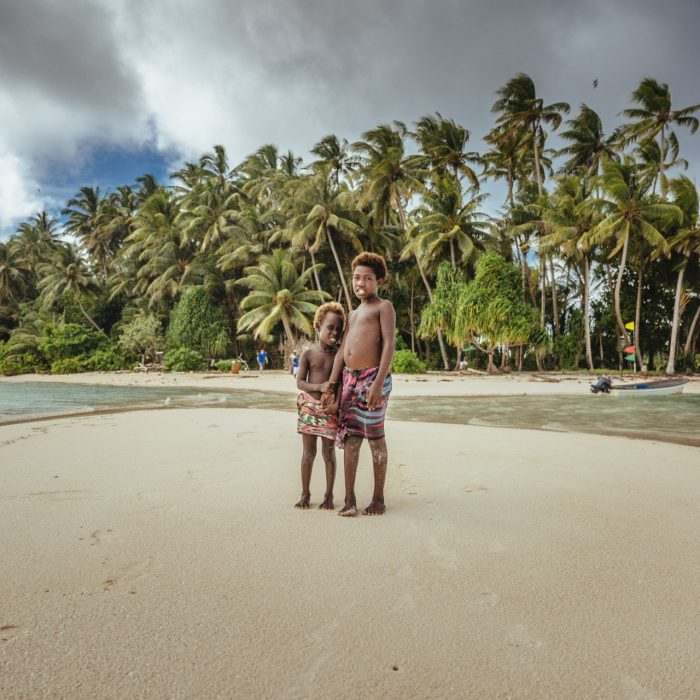
The challenge
Every second, someone is displaced by a disaster. Each year, about three times as many people are displaced internally by disasters than by conflict – the vast majority in the Asia-Pacific region.
Climate change will amplify the problem as worsening cyclones, floods, bushfires, droughts and food insecurity force millions from their homes, potentially rendering some areas permanently unsafe. Most people will move within their own countries, but some may be displaced across borders.
While the challenges of addressing climate change and disasters are immense, much can be done to alleviate displacement and its human costs – if we act now.
Whether and how people move will be dependent on mitigation, adaptation, disaster risk reduction, financing, resourcing, technological innovation and migration policies. In other words, the extent of climate mobility will in part depend on the choices we make today.
We need to develop laws and policies that assist people to remain in their homes where this is possible and desirable; to move elsewhere, in anticipation of harm; and to be protected and assisted if they are displaced. At all times, safeguarding people’s choices, rights and dignity must be paramount.
Our impact
At the forefront of global efforts to ensure that people displaced in the context of climate change and disasters are protected, the Kaldor Centre is actively engaged in key international policy processes – from advising the UN Refugee Agency on its global strategy, through to informing frameworks that have been endorsed by the majority of the world’s governments. As a senior negotiator on the world’s first migration compact explained, ‘[m]uch of what is reflected in [that instrument] would not have been possible without the conceptual work done by the Kaldor Centre.’
We provided advice to the Biden Administration about how the US could create protection and resettlement frameworks for people displaced by climate change impacts. We advised Pacific governments on strategies to preserve statehood and protect people affected by sea-level rise, and created the initial draft of a world-first climate mobility framework for Pacific States. At all times, our approach is informed by the views of communities on the frontline of climate change, garnered through our fieldwork in the Pacific, South Asia and Africa.
Our pioneering research is already making a difference for people on the ground – assisting people at risk of displacement to secure their long-term future.
Our work
Our vision is a world in which people at risk of climate-related displacement can lead safe, dignified and secure lives. We work in partnership with communities, governments and international organisations to help develop holistic solutions for people at risk. By combining our legal and policy expertise with lived experience on the ground, we help to ensure affected communities are ‘future ready’ by anticipating, preparing for and responding to climate mobility.
We do the deep, long-term thinking that drives more nuanced understandings of international law in this context, including with respect to refugee law, migration law, statelessness, statehood, human rights and the protection of culture, nationality and franchise.
We work with affected communities to co-design legal and policy responses that help them adapt and reduce the risks posed by climate change and disasters, while also enabling them to move safely out of harm’s way if the need arises.
We develop robust legal and policy frameworks that guide more predictable and coordinated responses, upholding the human rights of people at risk and ensuring that their knowledge, views and perspectives are reflected.
We help governments to plan for the long term and devise strategies to protect the security and well-being of their populations. In doing this, we enhance public understanding about how climate change affects movement, so as to foster constructive engagement and solutions.
Our global work has included:
Co-drafting the first iteration of the Pacific Regional Framework on Climate Mobility – a world-first instrument that is currently being deliberated by Pacific Leaders;
Advising Pacific governments on strategies to preserve statehood and protect people affected by sea-level rise;
Spearheading the drafting of the International Law Association’s Sydney Declaration on the Protection of Persons in the context of Sea Level Rise
Contributing to the development of the Nansen Initiative Protection Agenda (endorsed by 109 governments), which provides a roadmap for national, regional and global initiatives on addressing disaster displacement;
Providing legal and practical guidance to governments on climate mobility, including the Biden Administration and authorities in the Americas and the Pacific;
Advising UNHCR on its institutional strategy on climate-related displacement, including applicable legal principles;
Drafting the Research Agenda for Advancing Law and Policy Responses to Displacement and Migration in the Context of Disasters and Climate Change in Africa
Providing key input into Guidance for Governments on Protecting People from Disasters and Environmental Change through Planned Relocation (UNHCR, Georgetown, Brookings)
Co-creating the Climate Mobility Africa Research Network (with Masinde Muliro University of Science and Technology, Kenya)
Featured work
-
Ensuring protection for people displaced across borders in the context of climate change (Jane McAdam and Tamara Wood)
This project aims to develop authoritative, practical legal guidance to expand the availability of protection for people displaced across borders in the context of climate change and disasters. It will articulate how existing refugee and human rights law frameworks can already provide substantial protection in this context, and provide practical guidance for decision-makers, legislators and lawyers.
Stage 1 will see the development of international-level guidelines explaining how the Refugee Convention, human rights treaties, and regional refugee and human rights law can apply in the context of climate/disaster-related displacement. This will provide an overarching framework to guide the development, in stage 2, of national-level guidelines showing how domestic asylum laws can be interpreted and leveraged to secure protection in this context.
This project is generously supported by Open Society Foundations, and is being undertaken in collaboration with the Center for Gender and Refugee Studies at the University of California College of the Law, San Francisco and the Essex Law School and Human Rights Centre.
Evacuations (Jane McAdam)
Evacuations can be a lifesaving tool. But as recent global conflicts and unprecedented disasters have shown, without careful planning and oversight, evacuations can also displace people – often for prolonged periods and at great social, economic and personal cost. This blind spot creates a risk that the needs and rights of millions of evacuees will remain invisible and unaddressed – especially since evacuations account for the vast majority of disaster-related displacement each year.
For more information on this timely and prestigious Australian Research Council Laureate Fellowship program, please see the dedicated project page here.
Planned relocation in the context of hazards, disasters and climate change (Sanjula Weerasinghe and Erica Bower)
As hazards, disasters and climate change profoundly affect people’s lives and living conditions, communities and authorities seek opportunities to move people permanently out of harm’s way. The planned relocation of people to areas with lower exposure and disaster risks are occurring around the world. This form of human mobility is recognised in policy and practice as a tool for disaster risk reduction and climate change adaptation. However, it can also undermine human security. As such, planned relocation is generally considered as a measure of last resort. Experts have developed guidance, tools and evidence to inform planned relocation processes; this research project builds on these previous efforts. It provides an evidence base of planned relocation cases from around the world and identifies their key characteristics, including the associated hazards, spatial patterns, number of households, distance between sites, legal frameworks, initiating and supporting actors and challenges. The research seeks to provide policymakers, practitioners and communities with refined information to better assess how planned relocation could be undertaken to minimise negative impacts, avoid pitfalls and promote human rights and human dignity. This work also serves as a foundation for future comparative research on what is, and what contributes to, ‘successful’ outcomes.
Protection in the context of conflict, disaster and other crises (Sanjula Weerasinghe)
In some places, conflict and disaster overlap and affect the same people. More recently, COVID-19 has aggravated the conditions of vulnerability of displaced populations. This research recognises that intersecting, overlapping or recurrent crises undermine governance and resilience and exacerbate protection needs. It examines how certain States in Africa and Latin America have recognised refugee status on the basis of broader criteria explicit in regional refugee definitions in situations where disaster combined with conflict and violence. Through case studies, it also examines how legal and institutional frameworks on internal displacement and disaster risk reduction address displacement associated with each trigger. Finally, it examines how the dual challenges of COVID-19 and disasters have affected internally displaced people in the Asia Pacific region.
Free movement agreements and protection for the disaster displaced (Tamara Wood)
In light of the protection gap for disaster displaced persons under international law, States and others must look to existing cross-border mobility mechanisms to see whether they could facilitate access to territory and safety for those forced to leave their homes and countries in search of security. This research investigates the potential role of one such mechanism – namely, regional agreements for the free movement of persons between States. Regional free movement agreements – including visa-free travel and the relaxation of entry requirements – have the potential to facilitate movement in the context of disasters and climate change, allowing affected communities to move in safety and with dignity. However, free movement agreements were not developed with the protection needs of displaced persons in mind, and at present are generally not attuned to the human rights of those who move.
This research project investigates how free movement agreements do, or could, provide protection for cross-border disaster displaced persons. It considers important questions such as whether disaster displaced persons are eligible for free movement into neighbouring countries, the rights afforded to displaced persons in countries of destination, and the prospects for lasting solutions for those who cannot return home, and makes recommendations as to how free movement agreements could be adapted or better implemented to address the protection needs of disaster displaced persons in the future. The research focuses on Africa, where free movement agreements have been adopted or proposed at both the regional and sub-regional levels. However, the findings and recommendations could provide a model for consideration in other regions as well, where rights-based free movement agreements could facilitate access to territory and lifesaving assistance for some of the world’s most vulnerable communities.
For further information, see The Role of Free Movement in Preventing and Responding to Displacement in the Context of Disasters and Climate Change: A Study of Africa and associated Stakeholder Workshop Report, Stellenbosch, South Africa.
Selected publications

Selected academic publications
Books
- J McAdam, Climate Change, Forced Migration, and International Law (OUP, Oxford, 2012) (319pp); paperback edn 2013 (344pp)
- J McAdam (ed), Climate Change and Displacement: Multidisciplinary Perspectives (Hart Publishing, Oxford, 2010) (258 pp)
Peer-Reviewed Articles
- M Foster, H Lambert and J McAdam, ‘The Time Trap in International Protection: The Misplaced Notion of “Imminence”’ (2025) 56 Georgetown Journal of International Law 273–328
- J McAdam, ‘Preserving Statehood through Population and Government: Safeguarding Nationality and Franchise in the context of Sea-Level Rise and Mobility’ (2022) 20 New Zealand Yearbook of International Law 3–39 (published Dec 2024)
- B Burson, W Kälin and J McAdam, ‘Statehood, Human Rights and Sea-Level Rise: A Response to the International Law Commission’s Second Issues Paper on Sea-Level Rise in relation to International Law’ (2021) 4 Yearbook of International Disaster Law 265–80 (published April 2023)
- M Foster and J McAdam, ‘Analysis of “Imminence” in International Protection Claims: Teitiota v New Zealand and Beyond’ (2022) 71 International and Comparative Law Quarterly 975–82
- L Lixinski, J McAdam and P Tupou, ‘Ocean Cultures, the Anthropocene and International Law: Cultural Heritage and Mobility Law as Imaginative Gateways’ (2022) 23(1) Melbourne Journal of International Law 1–22
- J McAdam, ‘Protecting People Displaced by the Impacts of Climate Change: The UN Human Rights Committee and the Principle of Non-Refoulement’ (2020) 114 American Journal of International Law 708–25
For a comprehensive list of publications, see https://research.unsw.edu.au/people/scientia-professor-jane-mcadam.

Selected media and commentary
Media
- Jane McAdam, ‘1 in 3 Tuvaluans is Bidding for a New ‘Climate Visa’ to Australia – Here’s Why Everyone May Ultimately End Up Applying’, The Conversation (27 June 2025)
- Jane McAdam, ‘Fresh Details Emerge on Australia’s New Climate Migration Visa for Tuvalu Residents: An Expert Explains’ (10 April 2025)
- Jane McAdam, ‘Climate Impacts Are Forcing People from Their Homes. When, How and Why Do They Have Valid Refugee Claims?’, The Conversation (11 February 2025); republished in Blog Asyl (3 March 2025)
- Jane McAdam, ‘LA Fires Starkly Show How Impacts of Climate Change Discriminate’, Women’s Agenda (10 January 2025)
- Jane McAdam and Chiara Scissa, ‘How Domestic Courts Are Using International Refugee Law and Human Rights Law in the context of Climate Change and Disasters’, EJIL:Talk! (22 November 2024)
- Jane McAdam, ‘Expanding Refugee Protection for a Changing Climate’, 360info (24 June 2024)
- Jane McAdam, ‘How the ICJ Could Shape Protection for People Displaced in the context of Climate Change’, Researching Internal Displacement blog (24 January 2024)
- Jane McAdam and Tamara Wood, ‘A Different Kind of Climate Movement: The Kaldor Centre Principles on Climate Mobility’, Pearls and Irritations (8 December 2023)
- Jane McAdam, 'Australia's Offer of Climate Migration to Tuvalu Residents is Groundbreaking – and Could be a Lifeline Across the Pacific,' The Conversation (11 November 2023)
- Jane McAdam, 'Maui After Fire Illustrates Need to Plan for Longer-Term Disaster Displacement', Just Security (5 November 2023)
- Jane McAdam, ‘Amid Global Warning of “Exodus”, Pacific Countries Lead the Way on Mobility Responses’, Researching Internal Displacement Blog (20 April 2023)
- Jane McAdam, ‘International Law on Refugees Has a Climate Change Problem’, World Politics Review (22 September 2022)
- Jane McAdam, 'Protecting people who lose their homes to climate change', Lowy Interpreter (26 October 2021)
- Jane McAdam, ‘Millions of People were Evacuated during Disasters Last Year: The Rising Human Cost of Climate Change’, The Conversation (20 October 2021)
- Jane McAdam, ‘As Biden Seeks Answers on Climate’s Impact on Migration, Sydney Declaration Provides Legal Ground Rules for Action’, Just Security (19 February 2021)
Conference/Seminar Papers
- Guy S Goodwin-Gill, 'Promoting sustainable peace through the protection of people displaced by climate change, disasters, and conflict: A personal view' (December 17, 2024) SSRN: https://ssrn.com/abstract=5061743 revised and extended version of the original keynote address at the Cambridge International Law Journal Annual Conference on 8 April 2024
- Jane McAdam, Invited panellist, American Society of International Law (Migration Law Interest Group and the International Refugee Law Interest Group), ‘The Courts, Climate Change, Migrant and Refugee Rights’ (virtual panel, 3 March 2023)
- Jane McAdam, Keynote speaker, Better Future Forum, ‘Building Resilience to Climate Displacement’ (UNSW, 6–7 September 2022)
- Jane McAdam, Keynote address, Refugee Law Initiative Annual Conference, ‘Moving beyond Refugee Law: Putting Principles on Climate Mobility into Practice’ (virtual, 29 June–1 July 2022)
Public Events
- 2021 Kaldor Centre Virtual Conference, 'Whose move? Addressing migration & displacement in the face of climate change' (19-21 October 2021)
- ‘Climate Change and Displacement’, UNSOMNIA: Launch of the Grand Challenges (UNSW, 1 December 2016)
Other Papers/Presentations
- Social media video with Scientia Professor Jane McAdam AO and Professor John Church, on Climate Change and Displacement (25,000 views in a week) (May 2019)
Radio
- ‘A Plan to Ensure Pacific People Don’t Become Stateless’, Pacific Waves (Radio New Zealand, 19 May 2022)
- Feature interview, ‘Professor Jane McAdam on Mobility in the context of Climate Change and Disasters’, Unfiltered podcast (7 February 2022)
- Feature interview, ‘Climate Change Displacement Is Happening Now’, Displaced podcast (19 March 2019) https://www.rescue.org/displaced
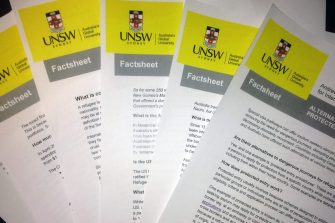
Key resources
Legal and policy resources
- Kate Jastram, Jane McAdam, Geoff Gilbert, Tamara Wood and Felipe Navarro, International Protection for People Displaced across Borders in the context of Climate Change and Disasters: A Practical Toolkit (Center for Gender & Refugee Studies, Kaldor Centre for International Refugee Law and Essex Law School and Human Rights Centre, 2025)
- Jane McAdam and Tamara Wood, Kaldor Centre Principles on Climate Mobility (November 2023)
- Jane McAdam and Jonathan Pryke, Policy brief 10 Climate Change, Disasters and Mobility: A Roadmap for Australian Action (October 2020)
Climate Mobility Hub
- A new and dynamic digital platform, the Climate Mobility Hub brings to life decades of research from our scholars, breaking it down into bite-sized pieces. Through beautiful images, short videos, simple explainers and pathways to deeper resources, the Hub is a gateway to greater understanding of this pressing and deeply human concern.
Research Reports
- Michelle Foster, Nicola Hard, Hélène Lambert and Jane McAdam, The Future of Nationality in the Pacific: Preventing Statelessness and Nationality Loss in the context of Climate Change (May 2022)
- Tamara Wood, Ileana Sînziana Pușcaș, Senai Terrefe, Lisa Lim Ah Ken and Christina Daszkiewicz, ‘Regional Integration, Human Mobility and Climate Change’ in State of Migration in East and Horn of Africa 2022 (International Organization for Migration, 2023)
- Erica Bower and Sanjula Weerasinghe, Leaving Place, Restoring Home: Enhancing the Evidence Base on Planned Relocation Cases in the Context of Hazards, Disasters, and Climate Change (Platform on Disaster Displacement and Kaldor Centre for International Refugee Law, March 2021)
- Jane McAdam and Jonathan Pryke, Climate Change, Disasters and Mobility: A Roadmap for Australian Action (Kaldor Centre for International Refugee Law Policy Brief 10, October 2020)
- The Sydney Declaration of Principles on the Protection of Persons Displaced in the context of Sea Level Rise
- Guy S Goodwin-Gill and Jane McAdam, UNHCR and Climate Change, Disasters, and Displacement (UNHCR, May 2017)
Interviews
- Video feature with Jane McAdam, 'On the Future of Climate Mobility', The Future Unleashed, Lincoln College, University of Oxford (12 November 2024)






